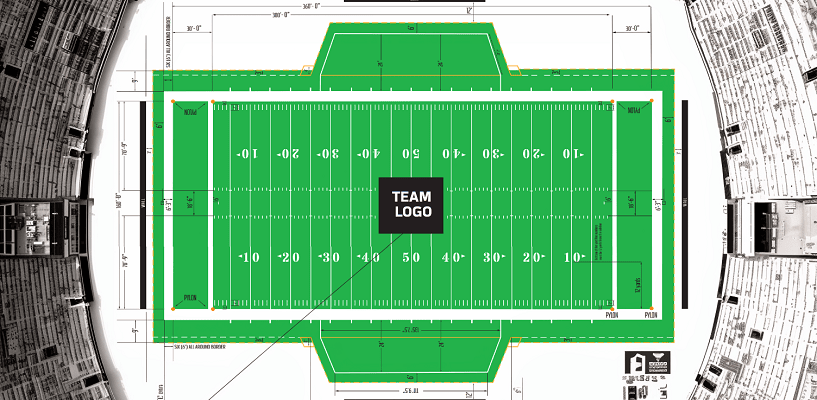- ॐ, Home
- >>
- US
- >>
- Sports
- >>
- American Football
- >>
- How Long is a Football Field
How Long is a Football Field

Positioned 10 yards (30 feet) inside the field and “running parallel to each end line” are the goal lines. Extending beyond each “goal line” to the corresponding “end line,” and bounded by the sidelines, are the end zones – the scoring areas where touchdowns are made. The “end lines” mark the back boundary of the “end zones.”
The ‘central, primary’ playing area, called the field of play, is the large rectangle bounded by these two goal lines and the two sidelines, and its entire surface must be an NFL-approved shade of green. This is the “playing field” (field of play), where every bit of offense, defense, and special‑teams strategy unfolds. The “field of play” — a rectangle 300 feet long (which is 100 yards) and 160 feet wide (which is 53.33 yards).
100 yards (playing field) + 10 yards (end zone 1) + 10 yards (end zone 2) = 120 yards total.
Just as each “end zone” is a ten‐yard–deep strip behind the goal line at either end of the ‘field of play,’ each “side zone” is a lateral strip that runs the full 100 yards (300 feet) between the goal lines along each sideline. It is bounded by the ‘sideline itself’ (outer edge), an “inbound line/hash mark” (inner edge), and the “two goal lines” (ends), creating a rectangular area “70 feet 9 inches wide” running the full 100-yard length of the “field of play” between the goal lines. Each “side zone” therefore forms a long rectangle 300 feet (100-yard) in length and 70.75 feet in width.
Football Field -
The football field includes both “the field of play” (the main area where the game is played), and “the two end zones at either end” (each 10 yards deep).
Surrounding the field is a ‘solid white border’ that must be a minimum of “6 feet” wide along all “sidelines and end lines” (i.e., along the perimeter). This white border serves as ‘a protective and visual buffer zone,’ separating the field from surrounding “structures and personnel.”
For enhanced safety and crowd control, a “secondary broken restraining line” must be marked “6 feet” beyond the outer edge of the above “6-feet solid white border,” effectively creating a 12-feet buffer zone from the “sideline/end line” in non-bench areas. This line helps to define a restraining perimeter, often used to keep “media, staff, and other personnel” at a safe distance from the field during gameplay.
The above “broken restraining line” follows the field’s contour along the “sides and ends” but deviates at each 25-yard line, angling away to pass behind the “designated team bench areas.” The “team bench areas” on an NFL field sit well outside the playing surface, on each “sideline” between the two 25‑yard lines. The 25-yard line in American football refers to the line that stretches parallel to the “width of the field” 25 yards (75 feet) away from each goal line.
An important exception exists: if a stadium’s “solid white border” is constructed to be at least 12 feet wide (instead of the minimum 6 feet), there is no need to add the “broken restraining line” in the non-bench areas.
^^^ the aforesaid data came from ‘official sources’ present at:
That’s all friends.
Suggestions or corrections for this page can be submitted from the “contact us” page.
Ads Section

